Otoplasty in Vilnius
Search and Compare the Best Clinics and Doctors at the Lowest Prices for Otoplasty in Vilnius

Find the best clinics for Otoplasty in Vilnius
With Medijump you can browse 3 facilities offering Otoplasty procedures in Vilnius. The cheapest price available is $633 in Vilnius. And for the cheapest price globally, prices start from $100 in Egypt.
Otoplasty in Lithuania
Price: $ 633
Otoplasty in Vilnius
Price: $ 633
Egypt offers the best prices Worldwide
Price: $ 100
From 10 verified reviews
AGNĖ KULBYTĖ-PETRAUSKIENĖ, 23 December 2019
I have visited many times, doctor dermatologist Justė Kantauskaitė - a great specialist, left a wonderful impression both as a person and as a specialist in her field. Next time I would pick her again. My daughter also really enjoyed it!
From 42 verified reviews
Ieva Žentelytė, 15 September 2020
Thanks to surgeon A. Sklepavičius for taking care of his patients, professionalism and the fact that He heals people, discovers diseases. I was lucky to entrust my problems to this Doctor in capital letters. Happy patients and clinic with a doctor like A. Sklepavičius.
From 16 verified reviews
Daiva Krasauskienė, 07 September 2020
Very high quality service, results met expectations. I recommend!
Compare Before & After Photos of _procedure_photos.phpOtoplasty
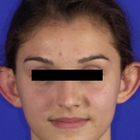
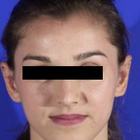
Front view
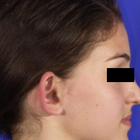
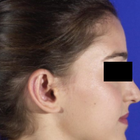
Full-side view
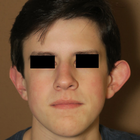

Front view

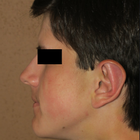
Full-side view
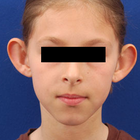
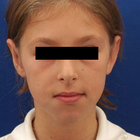
Front view
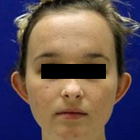
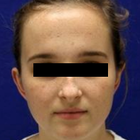
Front view
WHY US?
At Medijump, we're making medical easy. You can search, compare, discuss, and book your medical all in one place. We open the door to the best medical providers worldwide, saving you time and energy along the way, and it's all for FREE, no hidden fees, and no price markups guaranteed. So what are you waiting for?

Free

Best Price

Widest Selection

Risk-Free
What you need to know about Otoplasty in Vilnius

Otoplasty, also referred to as cosmetic ear surgery, is a type of cosmetic procedure to change the size, shape, or position of the ear. It is performed on the visible part of the outer ear, called auricle. Some people choose to have the surgery to correct odd-shaped ears due to an injury or birth defect. Others have it because they are concerned with how their ears protrude too far from their head. Otoplasty can be performed at any age after the ears have reached their full size, generally after age 5. In some cases, the surgery may be done as early as age 3.
There are several types of otoplasty. The following are the most common:
- Ear pinning draws the ears closer to the head. It is usually done on people whose ears stick out too far from their head.
- Ear augmentation is ideal for individuals whose ears are small or have not completely developed. This type of otoplasty can increase the size of the outer ear.
- Ear reduction is usually done on people with macrotia, which is a condition when the ears are larger than normal. Otoplasty can reduce the size of the ears.
What does a Otoplasty Procedure Involve?
Otoplasty is typically carried out under local anesthesia with a sedative, so you will be awake but you will not feel any pain. In some cases, general anesthesia may be used, typically for younger children.
The techniques used by your surgeon vary based on the type of otoplasty you are having. In general, your surgeon makes an incision either within the inner creases of your ears or on the backs of your ears. Then, your surgeon manipulates the tissue of the ear, which may include removal of cartilage or skin, grafting of cartilage to the ear, or folding and shaping of cartilage using permanent stitches. Once your surgeon is done correcting the shape, size, and position of your ears, the incisions are closed with stitches.
How Long Should I Stay in Vilnius for a Otoplasty Procedure?
Otoplasty can take between 1 and 3 hours to perform, depending on the complexity and the specifics of the procedure. It is typically done as an outpatient procedure, which means you can leave the hospital on the same day. It is recommended that you stay in Vilnius for 7 more days for follow-up checkups and removal of stitches.
What's the Recovery Time for Otoplasty Procedures in Vilnius?
The recovery period may vary from one person to another. You may experience numbness for several weeks, and mild bruising for about 2 weeks. For several months, your ears may feel stiff and sore.
You should be able to go back to work and resume your normal activities, including exercise, within one to two weeks after surgery. Physical contact sports, such as rugby, football, or judo, should be avoided for at least 3 months. You should also avoid swimming for up to 8 weeks following your otoplasty.
What sort of Aftercare is Required for Otoplasty Procedures in Vilnius?
Your surgeon will provide post-operative instructions. Make sure to follow the instructions carefully to promote smooth and quick recovery. You should rest with your head elevated on 2-3 pillows to minimize swelling. It is recommended that you eat a light, soft, and cool diet for several days. Take pain medication as prescribed by your doctor. Avoid sleeping on your side or rub the incisions to keep pressure off your ears. Consider wearing shirts with loose-fitting collars or button-down shirts.
What's the Success Rate of Otoplasty Procedures in Vilnius?
Otoplasty is a safe and effective procedure, with high satisfaction rates. More than 90% of people who had the procedure claimed to be extremely happy with the results. Note that it may take some time for the result to be fully visible.
While it is a safe procedure, you still need to be aware of possible risks and complications that otoplasty carries. These include bleeding, hematoma formation, infection of the skin, infection of the cartilage of the ear, permanent or temporary numbness around the affected area, scar or keloid formation, unfavorable results, prolonged pain, narrowing of the external ear canal, impaired healing, changes in skin sensation, asymmetry, and overcorrection.
Are there Alternatives to Otoplasty Procedures in Vilnius?
There are not many viable alternatives to otoplasty as of yet. One of the most popular alternatives is nonsurgical otoplasty, which does not require any incisions. The procedure uses special sutures to pin the ears back and achieve a more symmetrical look. These sutures are woven into the ears and will remain in place permanently. They are also virtually invisible, so the results will look natural.
For babies under three months old with prominent ears, ear-molds can be taped to their ears to reshape the ears without surgery. This type of treatment typically takes about six to eight weeks.
What Should You Expect Before and After the Procedure
Before otoplasty, you may have prominent or large ears or other deformity caused by an injury or birth defect that bothers you. Some people also feel self-conscious and embarrassed by the shape, size, and position of their ears. After the procedure, your ears will be corrected. Small or underdeveloped ears will be augmented to increase the size, the size of large ears will be reduced, and prominent ears will be drawn closer to the head. Your appearance will improve and you may feel more confident.
Whilst the information presented here has been accurately sourced and verified by a medical professional for its accuracy, it is still advised to consult with your doctor before pursuing a medical treatment at one of the listed medical providers
No Time?
Tell us what you're looking for and we'll reachout to the top clinics all at once
Enquire Now

Popular Procedures in Vilnius
Prices Start From $28

Prices Start From $1,945

Prices Start From $120

Prices Start From $275

Recommended Medical Centers in Vilnius for Otoplasty

- Interpreter services
- Translation service
- Religious facilities
- Medical records transfer
- Medical travel insurance
- Health insurance coordination
- TV in the room
- Safe in the room
- Phone in the room
- Private rooms for patients available

- Interpreter services
- Translation service
- Religious facilities
- Medical records transfer
- Medical travel insurance
- Health insurance coordination
- TV in the room
- Safe in the room
- Phone in the room
- Private rooms for patients available

- Interpreter services
- Translation service
- Religious facilities
- Medical records transfer
- Medical travel insurance
- Health insurance coordination
- TV in the room
- Safe in the room
- Phone in the room
- Private rooms for patients available

- Interpreter services
- Translation service
- Religious facilities
- Medical records transfer
- Medical travel insurance
- Health insurance coordination
- TV in the room
- Safe in the room
- Phone in the room
- Private rooms for patients available

- Interpreter services
- Translation service
- Religious facilities
- Medical records transfer
- Medical travel insurance
- Health insurance coordination
- TV in the room
- Safe in the room
- Phone in the room
- Private rooms for patients available

- Interpreter services
- Translation service
- Religious facilities
- Medical records transfer
- Medical travel insurance
- Health insurance coordination
- TV in the room
- Safe in the room
- Phone in the room
- Private rooms for patients available

- Interpreter services
- Translation service
- Religious facilities
- Medical records transfer
- Medical travel insurance
- Health insurance coordination
- TV in the room
- Safe in the room
- Phone in the room
- Private rooms for patients available
Otoplasty in and around Vilnius
About Vilnius
Vilnius is the capital of Lithuania and is also the largest city in the country, with a population of around 564,147. Vilnius was once referred to as the ‘Jerusalem of the north’ but the Jewish community was largely wiped out in WWII. The city does not hide its battle relics. Tourists will find museums dedicated to the Holocaust and preserved the KGB torture chamber. Other than its fascinating history, Vilnius also offers spectacular architecture, trendy bars, and hot-air balloons.
Vilnius is emerging as a medical tourism destination. Every year, medical tourism in Vilnius continues to expand and evolve. Medical treatments in Vilnius are gaining a powerful reputation among medical tourists. The vast majority of the medical tourists coming to Vilnius are from the Middle East, the United States, and Western Europe. Many tourists travel for Breast Augmentation or other cosmetic surgery. Kardiolita Hospital is one of the most popular medical facilities in the city. There are many reasons why local and international medical tourists come to Vilnius, including:
- Medical facilities with international standards such as JCI accreditation.
- Highly educated doctors and medical practitioners.
- Comprehensive diagnosis in just a single day.
- Foreign language speaking doctors and health care staff.
- Modern and secure equipment.
- Affordable prices for a wide range of medical treatment.
Popular Areas in Vilnius
Vilnius is a driving force behind Lithuania’s tourism sector. The city has affordable attractions, accommodations, and restaurants, Historical landmarks, extraordinary architecture, green spaces, and an array of cafes making the city a special place to visit.
- Palace of the Grand Dukes of Lithuania is located in the heart of Vilnius. The building has a Renaissance, Gothic, and early Baroque architectural styles. The reconstructed palace is now transformed into a museum with 4 exhibition tour routes related to the historical functions. A guided tour is in English, Russian, and German is available for tourists.
- Museum of Occupations and Freedom Fights (KGB Museum) is a museum with the darkest history in Vilnius. It is located in the former KGB building and preserved exactly how the KGB officers left the building. A museum is an excellent place for tourists who want to learn more about history.
- Antakalnis Cemetery in Vilnius is arguably one of the most interesting graveyards in Europe. The cemetery is the final resting place of Lithuanian leaders and locals lost to war. The most notable monuments are the Memorial of Red Army Soldiers and the monument of the victims of January 13, 1991.
- Gediminas’ Tower of the Upper Castle is the remnant of a brick castle built by the Duke of Lithuania, Vytautas Magnum. Tourists can get onto the top of the Gediminas Hill by foot or by the provided modern lift. While in the modern lift, tourists can see panoramic views of Vilnius along with the River Neris.
Weather and Climate in Vilnius
Summers in Vilnius is warm and dry, with occasional showers and chilly days. Summers are short, lasting for around two months from June to August. The average temperature in the summer is around 11 °C to 22 °C. Summers are usually the busiest time for the city’s tourism.
Although autumn is exceptionally beautiful and has many sunny days, the temperature will cool down rapidly during this season. It can get as low as -1°C in mid-November.
The winters are freezing when the average temperature plummets to -9°C. The temperature will remain below zero until March. Winters in the city can be an amazing time. However, it can be difficult in rural areas.
Spring usually arrives late in April and does not last very long. The temperature in Spring is cool and the green spaces are blossoming.
Getting Around in Vilnius
Vilnius International Airport is the largest airport in Lithuania that connects the country with European cities. It is the hub for air Baltic and Get Jet Airlines. The airport serves many major airlines, as well as budget airlines such as Ryanair and Wizz Air.
Tourists can take the airport taxis to the city center. The taxis can be found in front of the arrivals terminal. A ride to the city center should cost around 10 EUR to 18 EUR. The city bus is another option to travel to Vilnius city center. It is more affordable than taxis, with a single ticket costs around 1EUR.
Walking is the best mode of transportation for exploring the Old Town. A good portion of Vilnius’s attractions is located within walking distance. Buses and trolleybuses are also available, tickets cost 1 EUR which can be paid directly to the driver. Taxis are not very recommended because many taxi drivers are known to cheat foreigners. Uber is available.
Tourist Visas in Vilnius
European Union citizens, American, Canadian, Australian, and British can stay in Vilnius for up to 90 days. Citizens of other countries must apply and obtain a visa before entering Lithuania
The country is part of the Schengen Area, tourists who already hold a Schengen visa does not have to apply for a new visa to enter Lithuania. A passport valid for at least three months beyond the length of stay is required.
Additional Information
- Local Currency: Since Lithuania adopted the euro in 2015, the official currency is the euro. 1 USD is equivalent to 0.88 EUR.
- Money & Payments: Tourists can withdraw money from ATMs. Visa and MasterCard credit cards are mostly accepted in hotels and restaurants. Tourists can tip 10% in restaurants if the service is good. Always tip in cash even when you’re paying with credit or debit cards.
- Local Language: The official language is Lithuanian. Most people in the tourism area and the younger generation can speak English fluently. A large number of the population also speaks Russian and Polish.
- Local Culture and Religion: Christianity (specifically Catholic) is the major religion in Vilnius. Small groups of the population follow Judaism, Islam, and other religions.
- Public Holidays: Vilnius celebrates major Christian religious holidays. The city also hosts many annual festivals such as Capital Days in September, Culture Night and Trakai Medieval Festival in June, Street Musician’s Day in May, and Independence Day of the Republic of Uzupis in April.
Popular Searches
- Plastic Surgery in Thailand
- Dental Implants in Thailand
- Hair Transplant in Thailand
- Breast Augmentation Thailand
- Gastric Sleeve in Thailand
- Gender Reassignment Surgery in Thailand
- Laser Hair Removal in Bangkok
- Botox in Bangkok
- Dermatology in Bangkok
- Breast Augmentation in Bangkok
- Coolsculpting in Bangkok
- Veneers in Turkey
- Hair Transplant in Turkey
- Rhinoplasty in Turkey
- Stem Cell Therapy in Mexico
- Rhinoplasty in Mexico
- Liposuction in Mexico
- Coolsculpting in Tijuana
- Rhinoplasty in Korea
- Scar Removal in Korea
- Gastric Sleeve in Turkey
- Bone Marrow Transplant in India
- Invisalign in Malaysia
- Plastic Surgery in the Dominican Republic
- Tummy Tuck in the Dominican Republic
- Plastic and Cosmetic Surgery in Poland
- Rhinoplasty in Poland
- Hair Implant in Poland
- Dental Implants in Poland
- IVF in Turkey


